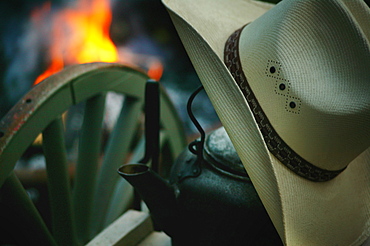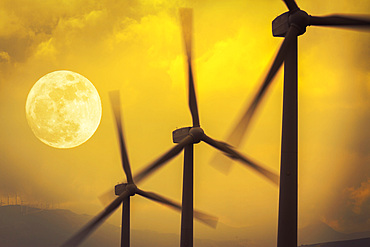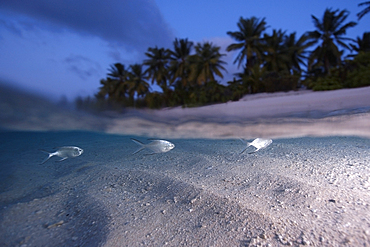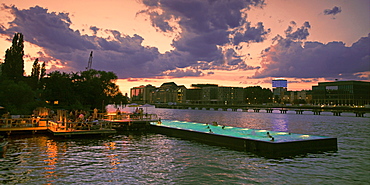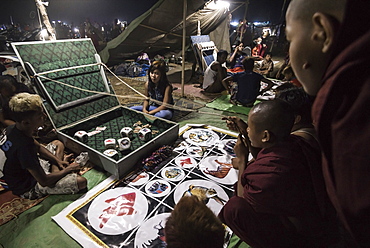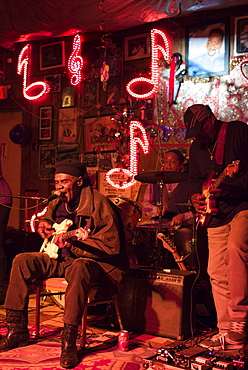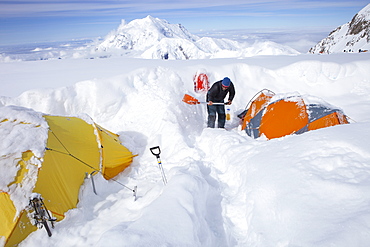Recent searches
Loading...
844-32445 - View of bars and night life, Liverpool City Centre, Liverpool, Merseyside, England, United Kingdom, Europe
832-398489 - view street city night with people lights
1350-6478 - Aerial view of the Levante beach and the skyline by night. Benidorm. Alicante. Valencia Community. Spain
1178-43430 - Caucasian disc jockey playing music in nightclub
1178-43429 - Caucasian disc jockey playing music in nightclub
1178-43424 - Disc jockey playing music in nightclub
1178-43423 - Disc jockey playing music in nightclub
1178-43448 - Aerial view of illuminated cityscape, Las Vegas, Nevada, United States,
1178-43426 - Disc jockey playing music in nightclub
1178-41348 - Caucasian girl laying on floor watching burning candles
1178-39965 - Caucasian teenage girl holding cell phone at amusement park
1178-39338 - Caucasian couple hugging in city street at sunset
1178-39964 - Caucasian teenage girl wearing leather jacket at night
1113-106051 - Evening shot of traffic and the classic London Underground sign. Shot in Piccadilly Circus in London, UK.
1350-2560 - Pink anemone fish, Amphiprion periderion, on magnificent sea anemone, Heteractis magnifica, Dumaguete, Negros, Philippines.
1350-2688 - Verges, a small town in the Northeast of Catalonia (Spain), during Easter celebrates the Procession of Verges with skeletons dancing on the sound of a drum, Roman soldiers, known as the 'Manages', and a representation of the life and crucifixion of Jesus Christ. The Procession features the Dance of Death, a tradition from the Middle Age associated with epidemics and plagues and the only one remaining in Spain Ten skeletons dance to the beat of a drum to remember that no one is exempt of death. The backdrop of the medieval walls and towers of Verges is key to this macabre staging.
1350-2557 - Mushroom coral, Ctenactis sp., night, Dumaguete, Negros Island, Philippines.
1350-2693 - Verges, a small town in the Northeast of Catalonia (Spain), during Easter celebrates the Procession of Verges with skeletons dancing on the sound of a drum, Roman soldiers, known as the 'Manages', and a representation of the life and crucifixion of Jesus Christ. The Procession features the Dance of Death, a tradition from the Middle Age associated with epidemics and plagues and the only one remaining in Spain Ten skeletons dance to the beat of a drum to remember that no one is exempt of death. The backdrop of the medieval walls and towers of Verges is key to this macabre staging.
1350-2486 - Split image of Smallspotted dart, Trachinotus baillonii, swimming along the sandy shore at dusk, Rongelap, Marshall Islands, Micronesia
1350-2692 - Verges, a small town in the Northeast of Catalonia (Spain), during Easter celebrates the Procession of Verges with skeletons dancing on the sound of a drum, Roman soldiers, known as the 'Manages', and a representation of the life and crucifixion of Jesus Christ. The Procession features the Dance of Death, a tradition from the Middle Age associated with epidemics and plagues and the only one remaining in Spain Ten skeletons dance to the beat of a drum to remember that no one is exempt of death. The backdrop of the medieval walls and towers of Verges is key to this macabre staging.
1350-2695 - Verges, a small town in the Northeast of Catalonia (Spain), during Easter celebrates the Procession of Verges with skeletons dancing on the sound of a drum, Roman soldiers, known as the 'Manages', and a representation of the life and crucifixion of Jesus Christ. The Procession features the Dance of Death, a tradition from the Middle Age associated with epidemics and plagues and the only one remaining in Spain Ten skeletons dance to the beat of a drum to remember that no one is exempt of death. The backdrop of the medieval walls and towers of Verges is key to this macabre staging.
1350-2511 - Family of false clown anemone fish, Amphiprion ocellaris, seeking refuge in sea anemone, Masaplod, Dumaguete, Negros Island, Philippines.
1350-2690 - Verges, a small town in the Northeast of Catalonia (Spain), during Easter celebrates the Procession of Verges with skeletons dancing on the sound of a drum, Roman soldiers, known as the 'Manages', and a representation of the life and crucifixion of Jesus Christ. The Procession features the Dance of Death, a tradition from the Middle Age associated with epidemics and plagues and the only one remaining in Spain Ten skeletons dance to the beat of a drum to remember that no one is exempt of death. The backdrop of the medieval walls and towers of Verges is key to this macabre staging.
1350-2504 - Family of false clown anemone fish, Amphiprion ocellaris, seeking refuge in sea anemone, Dumaguete, Negros Island, Philippines.
1350-2691 - Verges, a small town in the Northeast of Catalonia (Spain), during Easter celebrates the Procession of Verges with skeletons dancing on the sound of a drum, Roman soldiers, known as the 'Manages', and a representation of the life and crucifixion of Jesus Christ. The Procession features the Dance of Death, a tradition from the Middle Age associated with epidemics and plagues and the only one remaining in Spain Ten skeletons dance to the beat of a drum to remember that no one is exempt of death. The backdrop of the medieval walls and towers of Verges is key to this macabre staging.
1350-2687 - Verges, a small town in the Northeast of Catalonia (Spain), during Easter celebrates the Procession of Verges with skeletons dancing on the sound of a drum, Roman soldiers, known as the 'Manages', and a representation of the life and crucifixion of Jesus Christ. The Procession features the Dance of Death, a tradition from the Middle Age associated with epidemics and plagues and the only one remaining in Spain Ten skeletons dance to the beat of a drum to remember that no one is exempt of death. The backdrop of the medieval walls and towers of Verges is key to this macabre staging.
1350-2689 - Verges, a small town in the Northeast of Catalonia (Spain), during Easter celebrates the Procession of Verges with skeletons dancing on the sound of a drum, Roman soldiers, known as the 'Manages', and a representation of the life and crucifixion of Jesus Christ. The Procession features the Dance of Death, a tradition from the Middle Age associated with epidemics and plagues and the only one remaining in Spain Ten skeletons dance to the beat of a drum to remember that no one is exempt of death. The backdrop of the medieval walls and towers of Verges is key to this macabre staging.
1350-2696 - Verges, a small town in the Northeast of Catalonia (Spain), during Easter celebrates the Procession of Verges with skeletons dancing on the sound of a drum, Roman soldiers, known as the 'Manages', and a representation of the life and crucifixion of Jesus Christ. The Procession features the Dance of Death, a tradition from the Middle Age associated with epidemics and plagues and the only one remaining in Spain Ten skeletons dance to the beat of a drum to remember that no one is exempt of death. The backdrop of the medieval walls and towers of Verges is key to this macabre staging.
1350-2534 - Starry night octopus, Octopus luteus, foraging on coral reef at night, Malapascua, Cebu, Philippines, Visayan Sea.
1350-2512 - Family of false clown anemone fish, Amphiprion ocellaris, seeking refuge in sea anemone, Masaplod, Dumaguete, Negros Island, Philippines.
1350-2505 - Anemone fish, Amphiprion sp., Dumaguete, Negros Island, Philippines.
1350-2697 - Verges, a small town in the Northeast of Catalonia (Spain), during Easter celebrates the Procession of Verges with skeletons dancing on the sound of a drum, Roman soldiers, known as the 'Manages', and a representation of the life and crucifixion of Jesus Christ. The Procession features the Dance of Death, a tradition from the Middle Age associated with epidemics and plagues and the only one remaining in Spain Ten skeletons dance to the beat of a drum to remember that no one is exempt of death. The backdrop of the medieval walls and towers of Verges is key to this macabre staging.
1350-2694 - Verges, a small town in the Northeast of Catalonia (Spain), during Easter celebrates the Procession of Verges with skeletons dancing on the sound of a drum, Roman soldiers, known as the 'Manages', and a representation of the life and crucifixion of Jesus Christ. The Procession features the Dance of Death, a tradition from the Middle Age associated with epidemics and plagues and the only one remaining in Spain Ten skeletons dance to the beat of a drum to remember that no one is exempt of death. The backdrop of the medieval walls and towers of Verges is key to this macabre staging.
1350-2554 - Pair of false clown anemonefish, Amphiprion ocellaris, in anemone, Daiun, Negros, Philippines.
1350-2515 - False clown anemone fish, Amphiprion ocellaris, Dauin, Dumaguete, Negros Island, Philippines.
1350-2518 - Needle cuttlefish, Sepia aculeata, front view at night, Dumaguete, Negros Island, Philippines.
1178-36151 - Caucasian woman listening to nightlife
1178-32913 - Singer and musician performing on stage
1178-32914 - Singer and guitarist performing on stage
1178-32915 - Singer and guitarist performing on stage
1178-32373 - African American woman sitting at bar
1113-105427 - Young woman in a bar, Kreuzberg, Berlin, Germany
1113-105426 - Two young women drinking beer, Berlin, Germany
1116-49491 - People at an ice rink on new year's eve, Frog Pond, Boston Common, Boston, Suffolk County, Massachusetts, USA
1116-49490 - People at an ice rink on new year's eve, Frog Pond, Boston Common, Boston, Suffolk County, Massachusetts, USA
1113-103447 - Bathing ship in River Spree at sunset, Badeschiff, Berlin, Germany
1113-103446 - Bathing ship in River Spree at sunset, Badeschiff, Berlin, Germany
1113-104138 - Night Market Fast Food, Pasar Malam Night Market, Bandar Seri Begawan, Brunei Darussalam, Asia
1113-104137 - Grilled Chicken Wings, Pasar Malam Night Market, Bandar Seri Begawan, Brunei Darussalam, Asia
1113-103800 - Mexico, Yucatan, Playa del Carmen, Tequileria, Bar
1116-48101 - Bicycles and city lights, Beijing, China
1116-48090 - Chinese lanterns light decorations, Datong, China
1116-48466 - A young couple sits on a bench along a popular street at dusk looking at a smart phone, Edmonton, Alberta, Canada
1116-48088 - Urban landscape at night, Shanghai, China
1315-294 - Pub Street, a night life hotspot, at night, in Siem Reap, Cambodia, Indochina, Southeast Asia, Asia
1315-293 - Pub Street, a night life hotspot, at night, in Siem Reap, Cambodia, Indochina, Southeast Asia, Asia
1315-327 - Electric sign over Siem Reap's Pub Street, nightlife hotspot, Cambodia, Indochina, Southeast Asia, Asia
746-89511 - Istanbul at night. Beautiful sunset city skyline.
1284-213 - Yellow taxis in Times Square at night. New York City, New York, United States of America, North America
844-19305 - View of hotel rooftop bar and Tel Aviv skyline at dusk, Jaffa visible in the background, Tel Aviv, Israel, Middle East
1225-1292 - Venice cafes restaurants and street life, Venice, UNESCO World Heritage Site, Veneto, Italy, Europe
1278-200 - The Ladadika area at night with crowd in pedestrian zone of district famous for its bars and restaurants, Thessaloniki, Greece, Europe
857-95708 - People club hopping at night, Nashville, Tennessee, USA
1283-647 - A flamenco band playing live music in the historical centre, Seville, Andalusia, Spain, Europe
1247-86 - Black cab, London, England, United Kingdom, Europe
1247-85 - A bus and taxi zoom round Piccadilly Circus, London, England, United Kingdom, Europe
857-95330 - Side view of female tourist walking on street in Trinidad, Sancti Spiritus Province, Cuba
1276-28 - People having fun on Friday night on Granville Street, Orpheum Theatre visible in the background, Vancouver, British Columbia, Canada, North America
1112-3398 - Cityscape view of the Hotel Inglaterra taken at night, taken from the Prado in old Havana, Cuba, West Indies, Central America
746-63294 - Foreshortening, La Rochelle, France, Europe
746-86903 - Facade of Congreso de los Diputados, Madrid, Spain, Europe
746-67562 - Sorano Village,Grosseto, Tuscany, Italy, Europe
746-67560 - Sorano Village,Grosseto, Tuscany, Italy, Europe
746-54008 - Daily life, Al Mukalla, Yemen, Middle East
1226-368 - Times Square by night, New York City, United States of America, North America
1226-364 - Times Square by night, New York City, United States of America, North America
1226-369 - Times Square, New York City, United States of America, North America
1226-356 - Times Square by night, New York City, United States of America, North America
846-2690 - Night view of cafes along Calle Lanceria and El Gallo Azul rotunda building, Jerez de la Frontera, Andalucia, Spain, Europe
846-2692 - Tabanco Plateros at night, Jerez de la Frontera, Cadiz province, Andalucia, Spain, Europe
1175-1349 - A hotel terrace with a view over Istanbul, Turkey
1109-2735 - Heartbreak Hotel, a pop up bar in East London, England, United Kingdom, Europe
1215-27 - San Antonio Riverwalk, San Antonio, Texas, United States of America, North America
1212-22 - Shoppers in neon lit streets, Shanghai, China, Asia
1212-21 - Shoppers in neon lit streets, Shanghai, China, Asia
1109-2449 - Mrauk U, monks gambling at Dung Bwe Festival for the passing of an important Buddhist Monk, Rakhine State, Myanmar (Burma), Asia
1109-2448 - Mrauk U, gambling at Dung Bwe Festival for the passing of an important Buddhist Monk, Rakhine State, Myanmar (Burma), Asia
1161-8751 - Blues band, guitarist, drums, vocals in live performance on stage at Red's Lounge Blues Club in Clarksdale, Mississippi, USA
857-88773 - A mountain ranger is digging out tents after a snowstorm covered them during the night in 14k camp on Mount McKinley, Alaska. Climbers are advised to spare no expense on a expedition-quality tent as it can mean the difference between life and death during a ferocious storm on Denali. Extra poles and repair materials are important in case of damage caused by storms. Plan to take extra pickets, wands or deadmen for tent anchors. Never leave a tent without anchoring it securely. Tents are lost each year due to sudden gusts of wind while the tent was left unattended or drying. Every climbing season High Mountain Rangers of the Denali National Park Service are called to help climbers in need. If possible the patient is brought down to base camp on foot, only in life threatening conditions a helicopter is called to evacuate the patient to a hospital in Anchorage.
1175-191 - View of Rab cityscape and Adriatic sea at dusk in Croatia
829-2183 - Boat Quay and the Singapore skyline and river at dusk.



